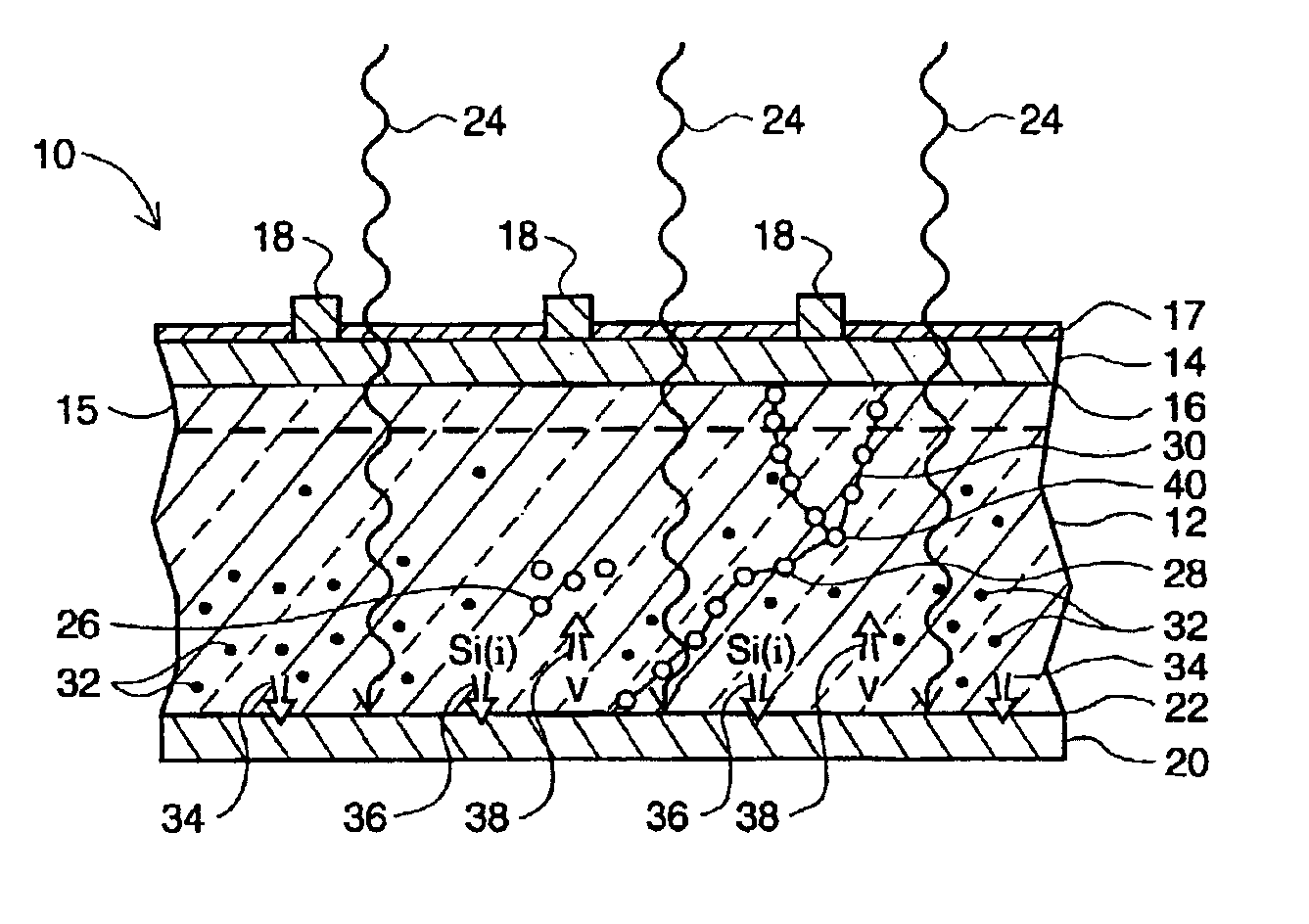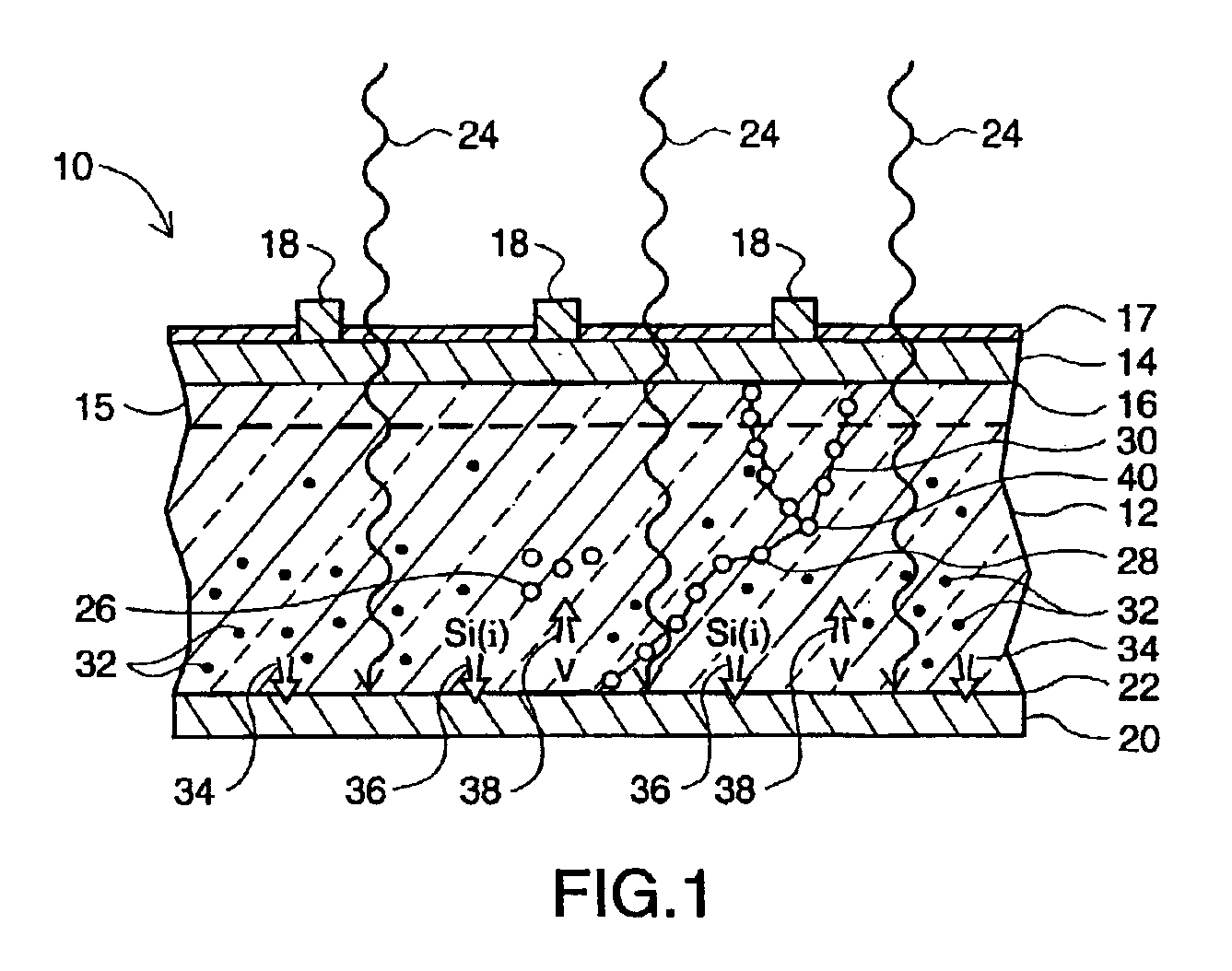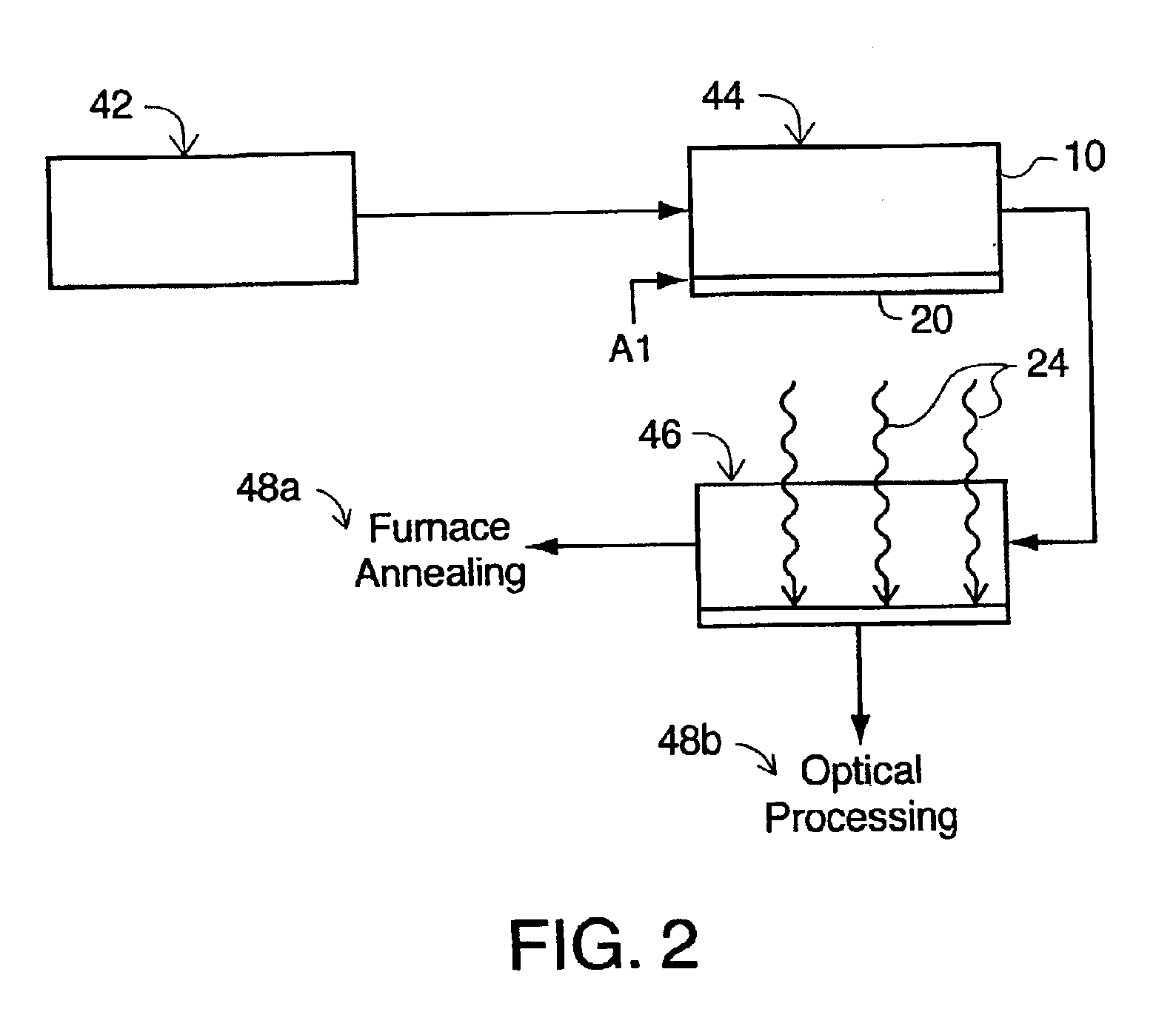Metal processing for impurity gettering in silicon
a technology of metal processing and impurity gettering, which is applied in the field of metal processing for impurity gettering in silicon, can solve the problems of high concentration of impurities and defects in pv-si, affecting the chemical purity of the material, and compromising the crystallinity, so as to improve the efficiency and performance of solar cell devices.
- Summary
- Abstract
- Description
- Claims
- Application Information
AI Technical Summary
Benefits of technology
Problems solved by technology
Method used
Image
Examples
Embodiment Construction
Dissolving precipitate metal-silicon (MSi) impurities 26, 28 and gettering dissolved metallic impurities 32 along with those dissolved metals from impurities 26, 28 from a crystalline or multicrystalline substrate 12 of a solar cell device 10 in FIG. 1 is enhanced by optical processing with radiant energy 24. A typical solar cell device 10 may comprise a crystalline or multicrystalline substrate 12, such as, but not limited to, p-type doped silicon (Si) which acts as a base, a different material emitter layer 14, such as a different metal to form a Schottky junction 16 or a differently doped (e.g., n-type) Si to form a homo-junction 16 and a depletion zone 15, a front electrical contact 18, such as an Al grid, and a back contact 20, preferably comprising a metal that also functions as a getter, such as Al, Pd, Ni, Pt, or some other metal. An anti-reflective (A / R) coating 17 is also shown on the solar cell device 10, which is a conventional component and not part of this invention. O...
PUM
| Property | Measurement | Unit |
|---|---|---|
| temperature | aaaaa | aaaaa |
| temperature | aaaaa | aaaaa |
| temperature | aaaaa | aaaaa |
Abstract
Description
Claims
Application Information
 Login to View More
Login to View More - R&D
- Intellectual Property
- Life Sciences
- Materials
- Tech Scout
- Unparalleled Data Quality
- Higher Quality Content
- 60% Fewer Hallucinations
Browse by: Latest US Patents, China's latest patents, Technical Efficacy Thesaurus, Application Domain, Technology Topic, Popular Technical Reports.
© 2025 PatSnap. All rights reserved.Legal|Privacy policy|Modern Slavery Act Transparency Statement|Sitemap|About US| Contact US: help@patsnap.com



